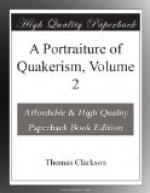[Footnote 181: Mat. 8.4.]
[Footnote 182: John 9.7]
CHAP. XVI.
SECT. I.
Supper of the Lord—Two such suppers, one enjoined by Moses, the other by Jesus Christ—The former called the Passover—Original manner of its celebration—The use of bread and wine added to it—Those long in use when Jews Christ celebrated it—Since his time, alterations made in this supper by the Jews—But bread and wine still continued to be component parts of it, and continue so to the present day—Modern manner of the celebration of it.
There are two suppers of the Lord recorded in the Scriptures; the first enjoined by Moses, and the second by Jesus Christ.
The first is called the Supper of the Lord, because it was the last supper which Jesus Christ participated with his disciples, or which the Lord and master celebrated with them in commemoration of the passover. And it may not improperly be called the Supper of the Lord on another account, because it was the supper which the lord and master of every Jewish family celebrated, on the same festival, in his own house.
This supper was distinguished, at the time alluded to, by the name of the Passover Supper. The object of the institution of it was to commemorate the event of the Lord passing over the houses of the Israelites in Egypt, when he smote the Egyptians, and delivered the former from their hard and oppressive bondage.
The directions of Moses concerning this festival were short, but precise.
On the fourteenth day of the first month, called Nissan, the Jews were to kill a lamb in the evening. It was to be eaten in the same evening, roasted with fire, and the whole of it was to be eaten, or the remains of it to be consumed with fire before morning. They were to eat it with loins girded, with their shoes on their feet, and with their staves in their hands, and to eat it in haste. The bread which they were to eat, was to be unleavened, all of it, and for seven days. There was to be no leaven in their houses during that time. Bitter herbs also were to be used at this feast. And none who were uncircumcised were allowed to partake of it.
This was the simple manner in which the passover, and the feast of unleavened bread, which was included in it, were first celebrated. But as the passover, in the age following its institution, was not to be killed and eaten in any other place than where the Lord chose to fix his name, which was afterwards at Jerusalem, it was suspended for a time. The Jews, however, retained the festival of unleavened bread, wherever they dwelt. At this last feast, in process of time, they added the use of wine to the use of bread. The introduction of the wine was followed by the introduction of new customs. The Lord or master of the feast used to break the bread, and to bless it, saying, “Blessed be thou, O Lord,




